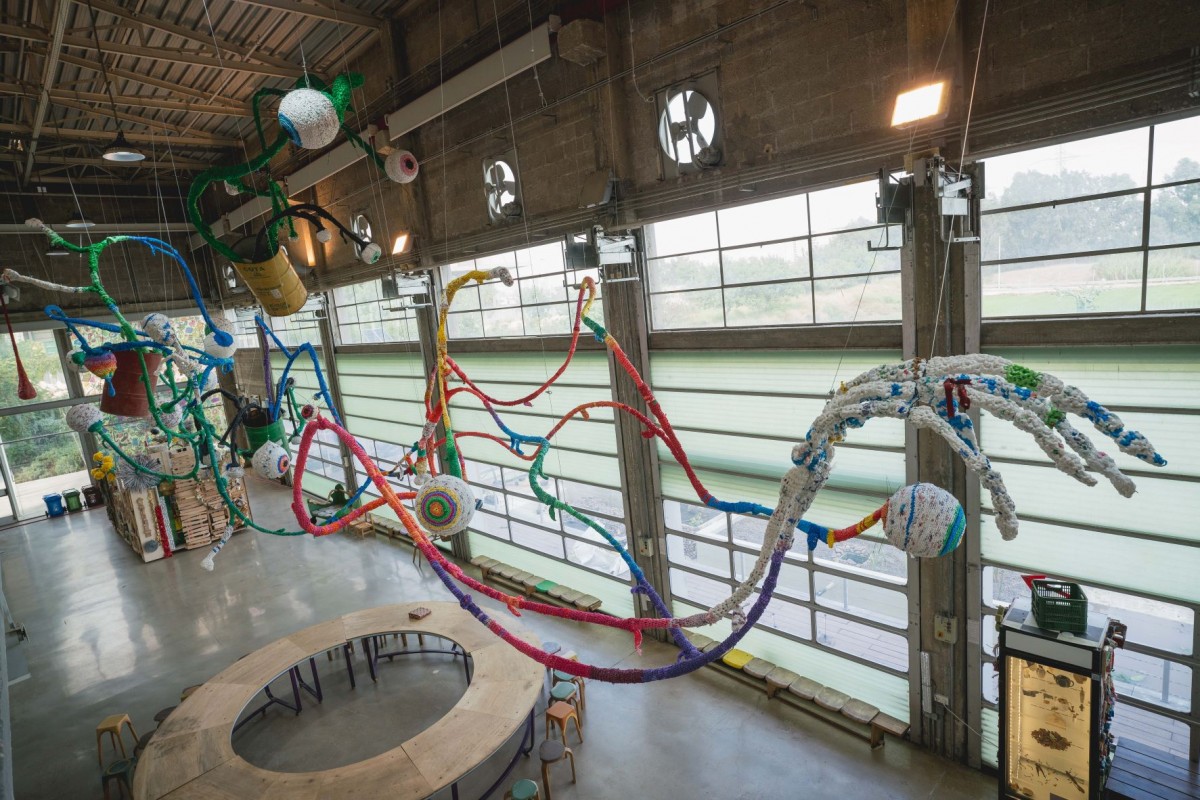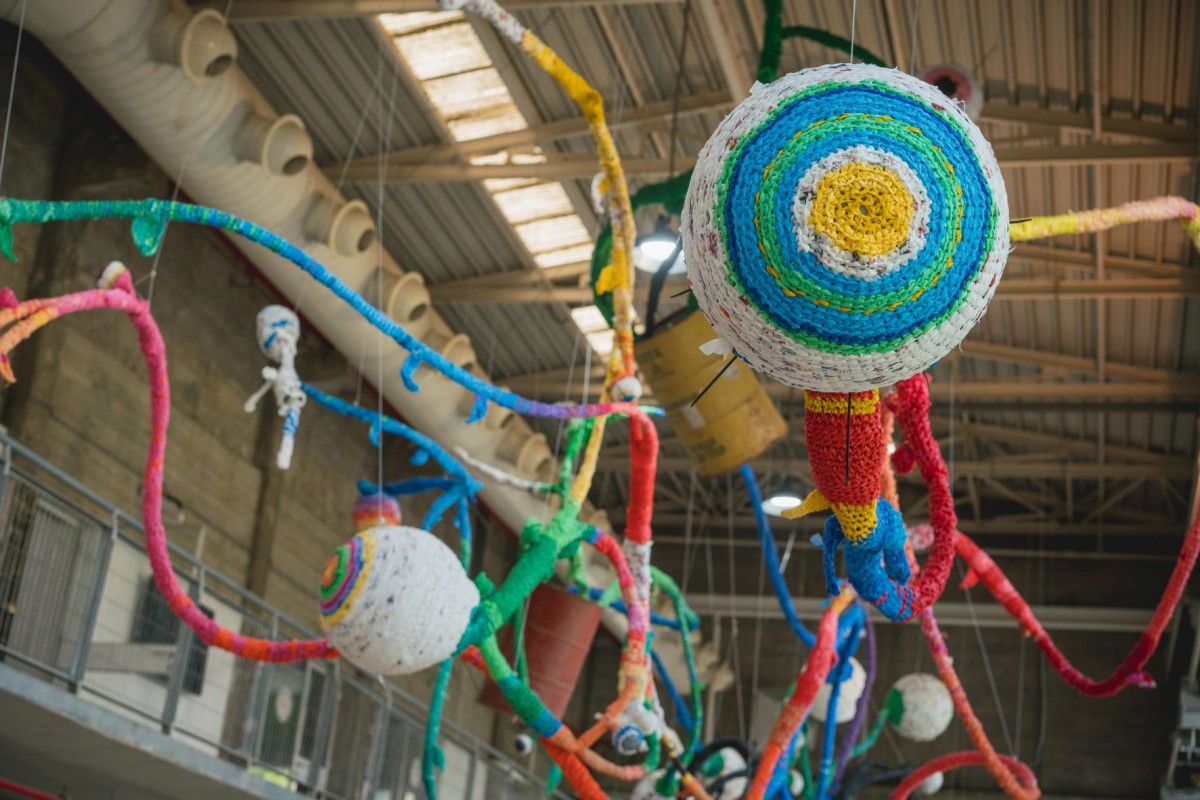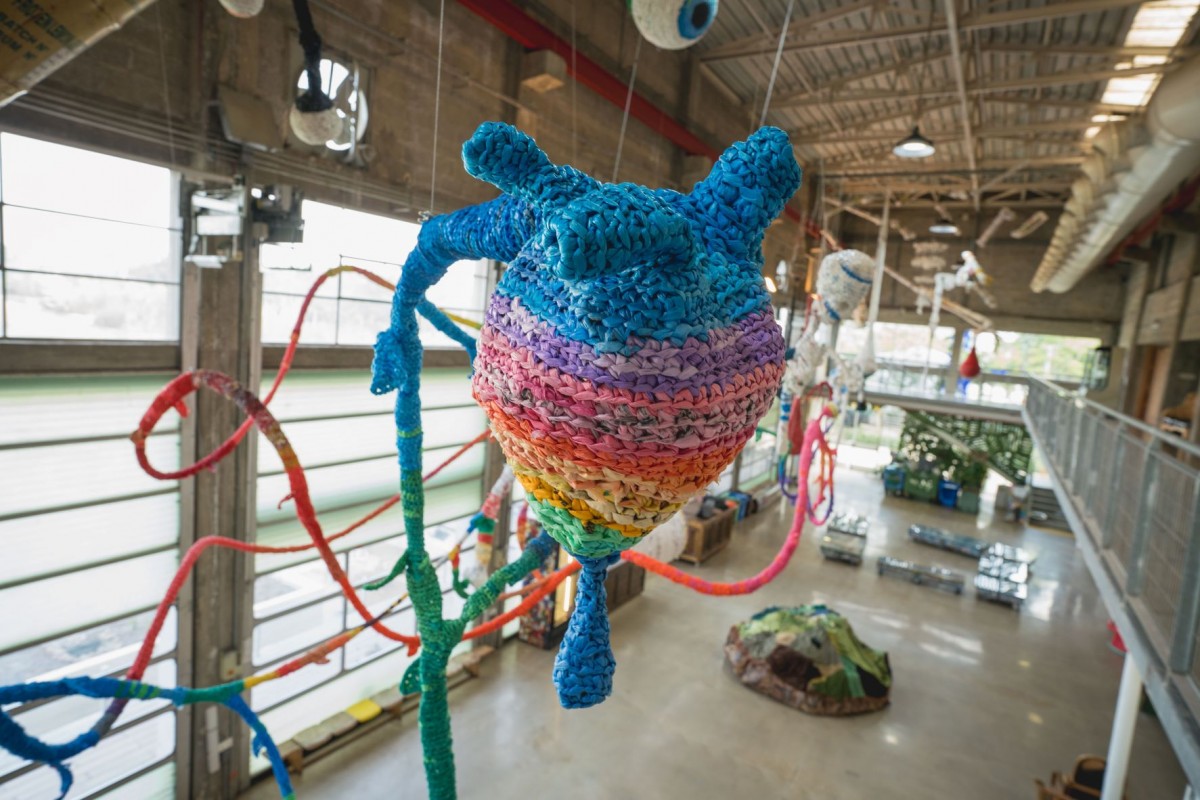


'Out of Sight' Gil Yifman
Curator: Adi Yekutieli
The production of plastic bags and humans' addictive and destructive use of them is an element that crosses generations and cultures. This overuse is the essence of artist Gil Yifman's installation 'Out of Sight.'
The impressive ceiling installation was created especially for the space of the Center for Environmental Education by the artist Gil Yifman and was installed at the end of a creative process shared by different communities. The installation is made of hundreds of thousands (and some say the number is close to a million) of plastic bags in different and spectacular colors.
The artist Gil Yifman, who created this installation, wanted to use it to discuss the materials that make up our lives and our world, while at the same time destroying them and threatening them.
Many partners from different communities took part in the creation of the giant knitting installation, which covers 400 square meters. Among those taking part in the craft of knitting are teachers, students, and women's communities in the north and center of the country.
The installation asks us to open our eyes and linger in the experience of observing a delicate and aesthetic fantasy that hides within it a drama of bones, fangs, and organs integrated into stems and turning into blood veins surrounded by large eyes that do not let go, thus asking us the viewers to see our excessive consumerism and its effect on the environment.
The artist Gil Yifman, the creator of the installation, is a graduate of the "Bezalel" art department, and previously won the Rapaport Award and the Young Artist Award from the Ministry of Culture. His works are in private and public collections, including The Tel Aviv Museum, the Herzliya Museum, the Jewish Museum in New York, and more. Gil took part in dozens of group exhibitions and even presented solo exhibitions in leading museums in Israel and around the world.
The artist's proposal for a ceiling installation was selected at the end of a "call" process open to creators from various fields. About 75 proposals were examined in three stages, with the involvement of two professional committees.
 Photographer: Ilan Spira
Photographer: Ilan Spira
